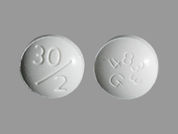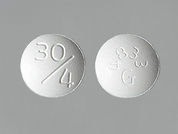Duetact
Duetact generic name: Pioglitazone-Glimepiride
What is Duetact used for?
This medication is a combination of 2 drugs, pioglitazone and glimepiride. It is used along with a proper diet and exercise program to control high blood sugar in patients with type 2 diabetes. Controlling high blood sugar helps prevent kidney damage, blindness, nerve problems, loss of limbs, and sexual function problems. Proper control of diabetes may also lessen your risk of a heart attack or stroke. Pioglitazone belongs to a class of drugs known as thiazolidinediones or "glitazones." It works by helping to restore your body's proper response to insulin, thereby lowering your blood sugar. Talk to your doctor about the risks and benefits of using pioglitazone-containing products. Glimepiride belongs to a class of drugs known as sulfonylureas. It works by causing the release of your body's natural insulin.
CHEMICAL NAME
DRUG TYPE
DiabetesDuetact Prices
Searching for the lowest prices
What does Duetact look like?
View all Duetact Image Information (2)Duetact Frequently Asked Questions
Your condition can cause complications in a medical emergency. For information about enrolling in MedicAlert, call 1-888-633-4298 (US) or 1-800-668-1507 (Canada).
IMPORTANT: HOW TO USE THIS INFORMATION: This is a summary and does NOT have all possible information about this product. This information does not assure that this product is safe, effective, or appropriate for you. This information is not individual medical advice and does not substitute for the advice of your health care professional. Always ask your health care professional for complete information about this product and your specific health needs.

